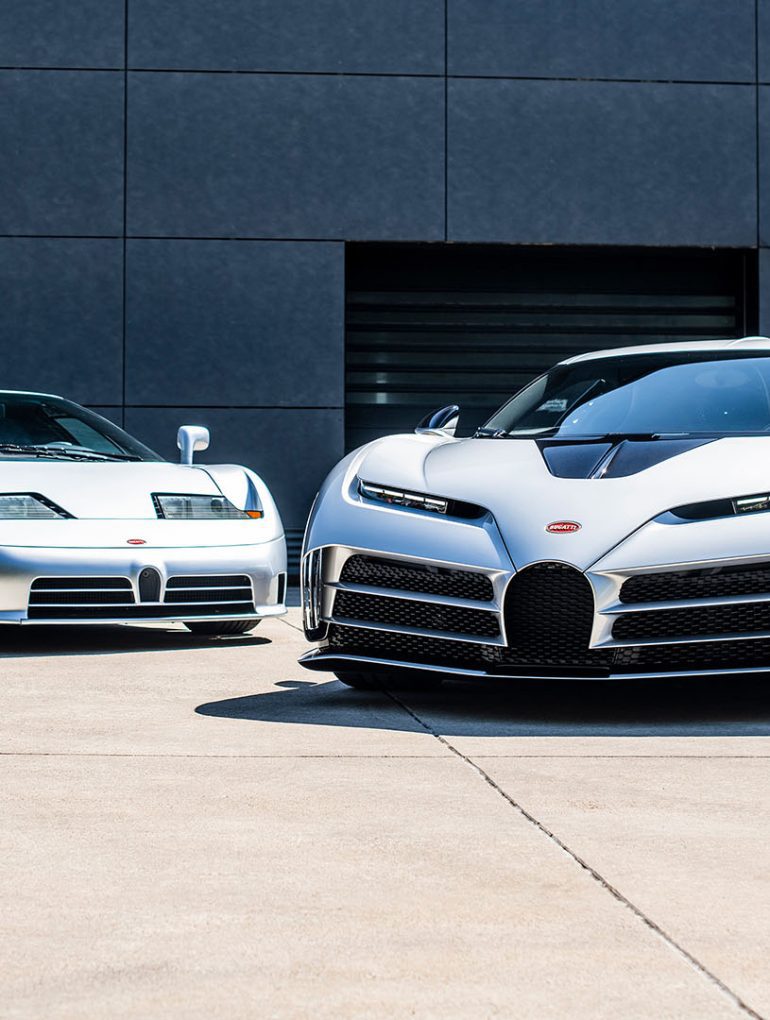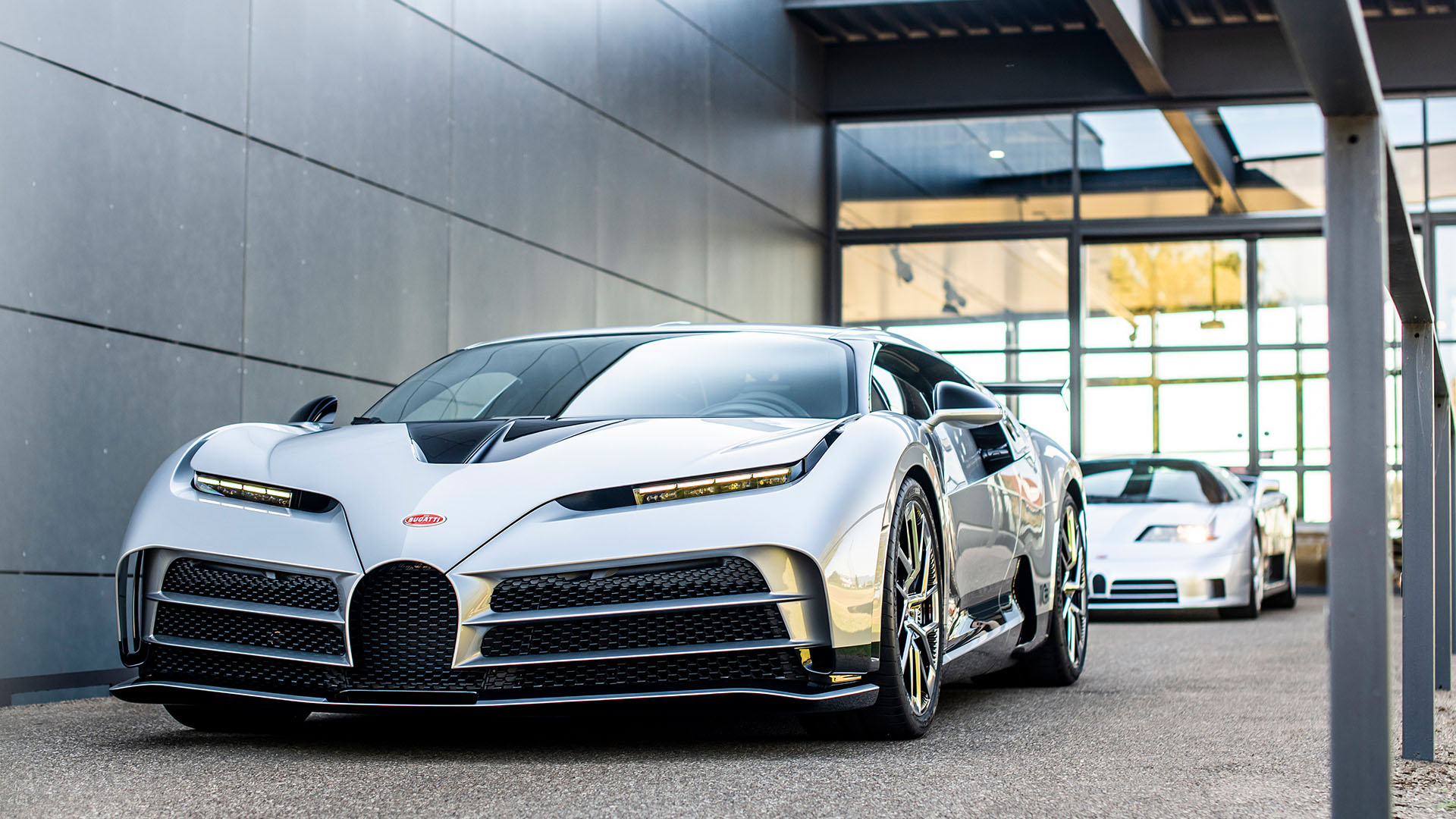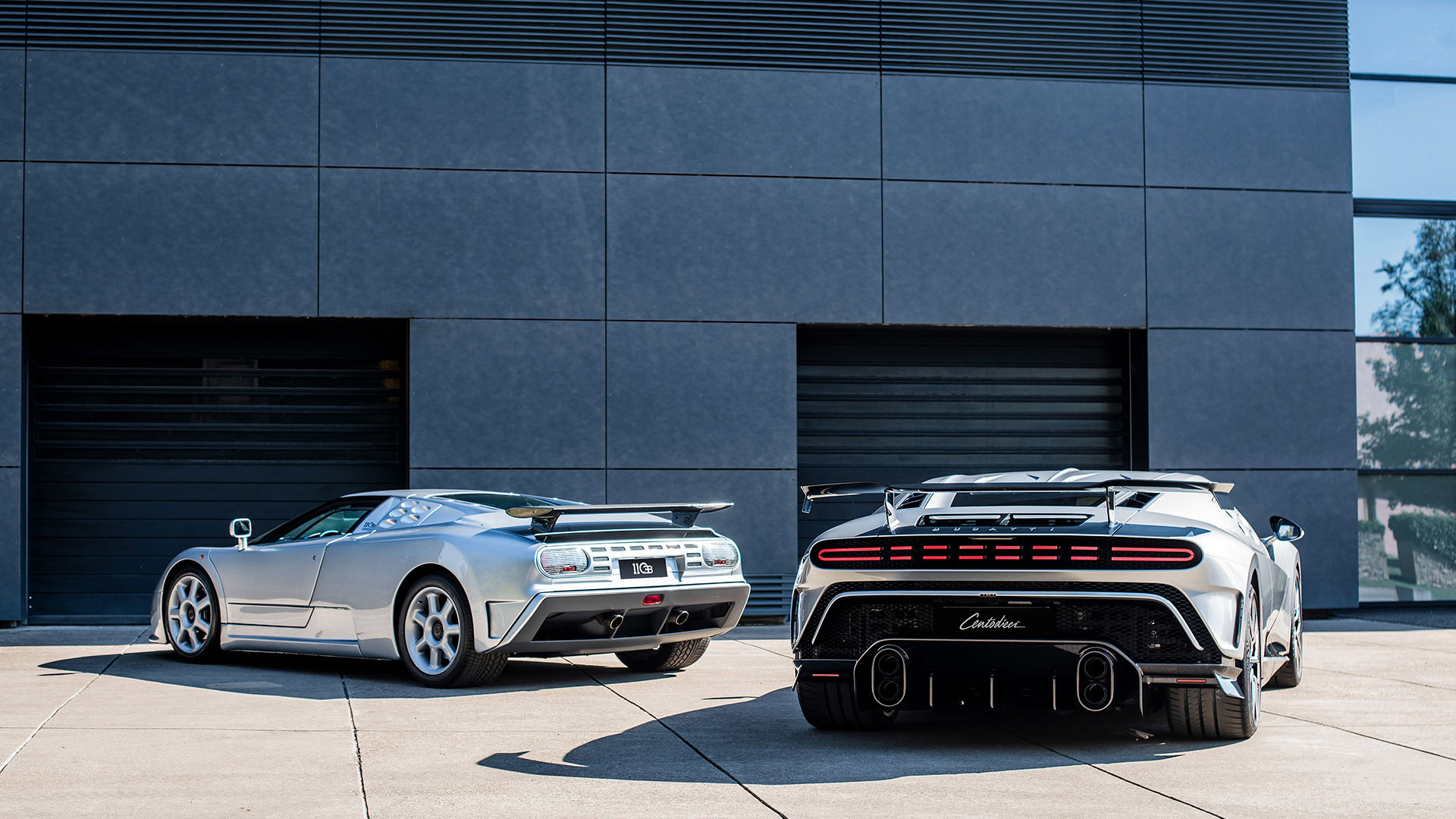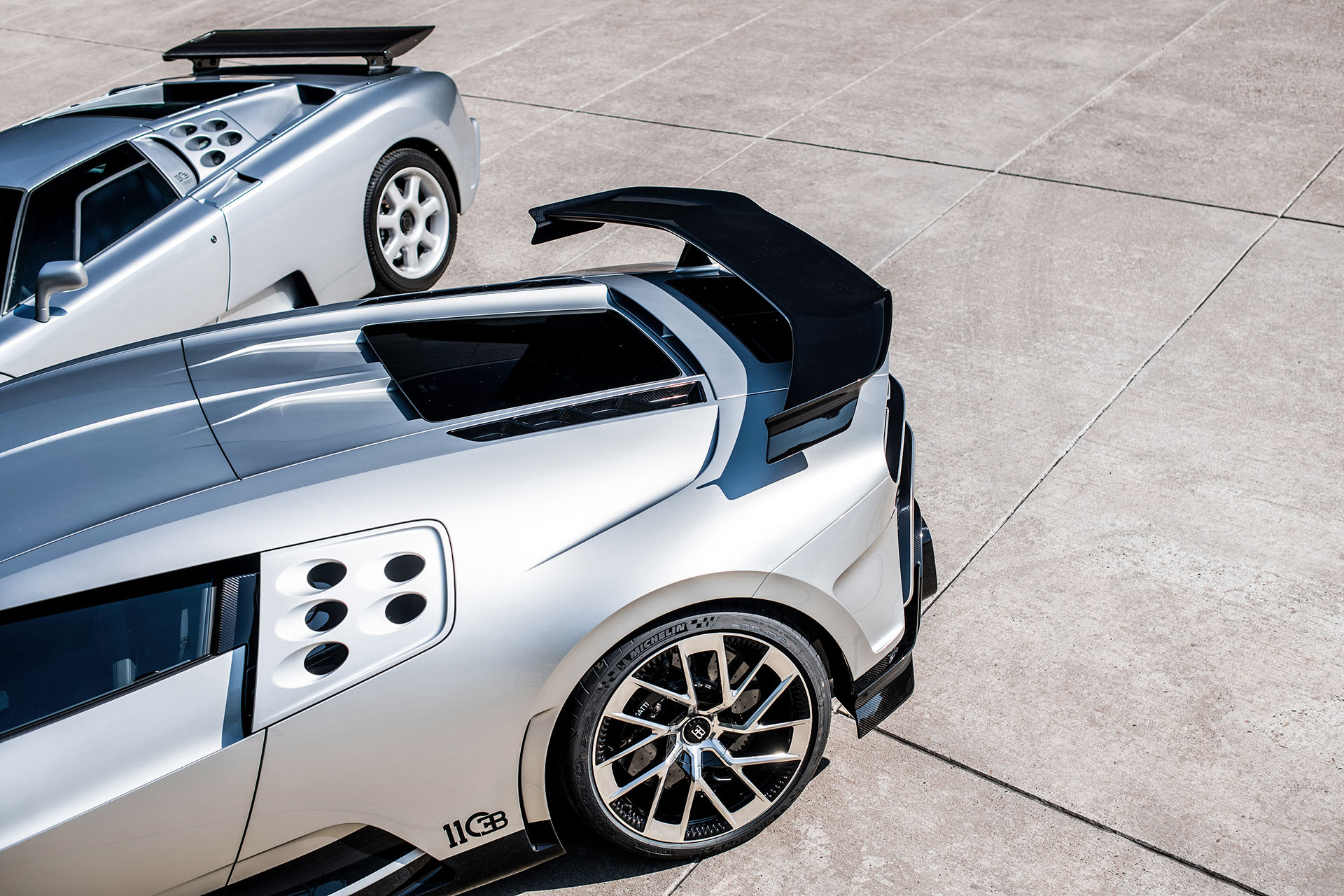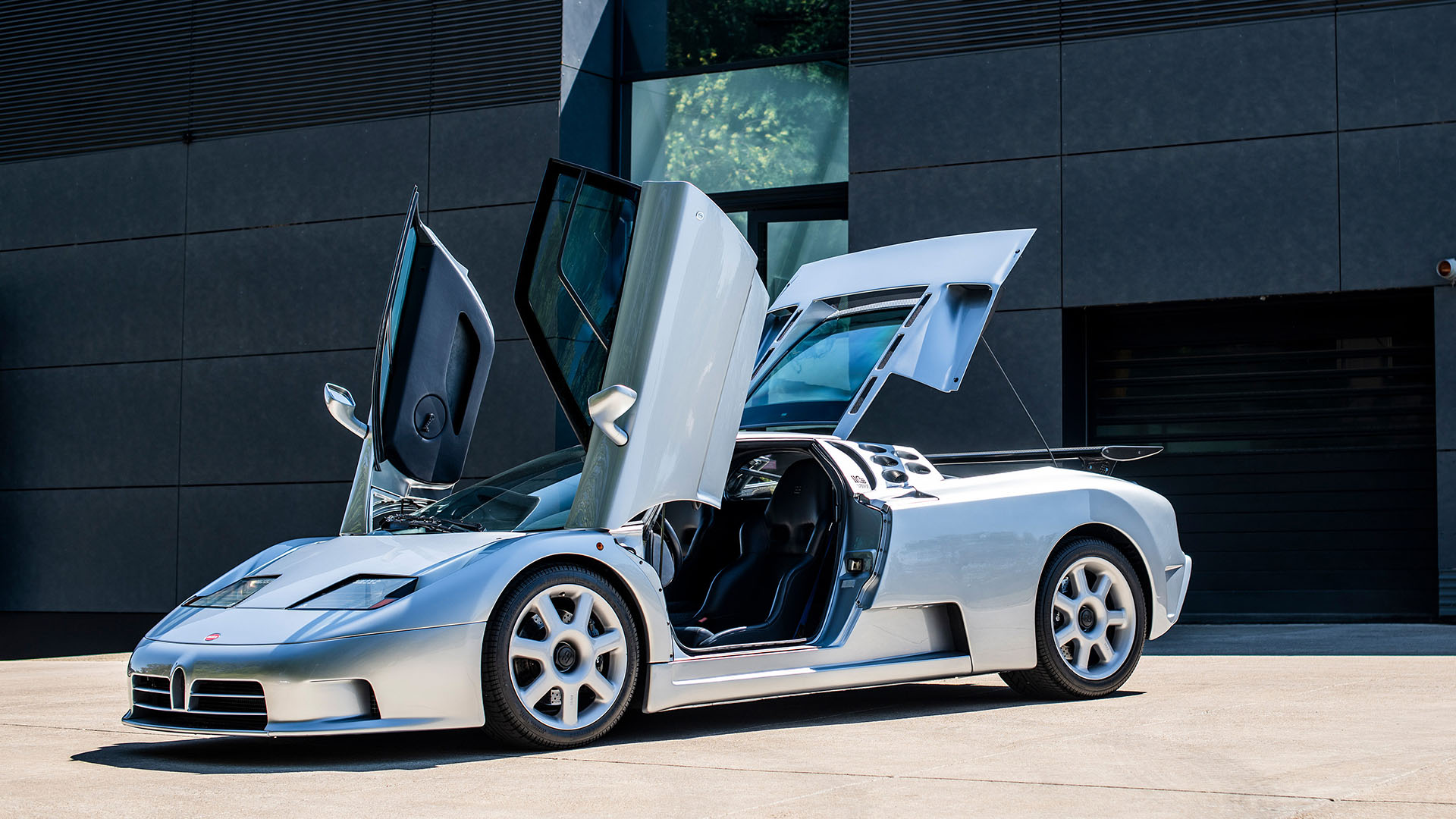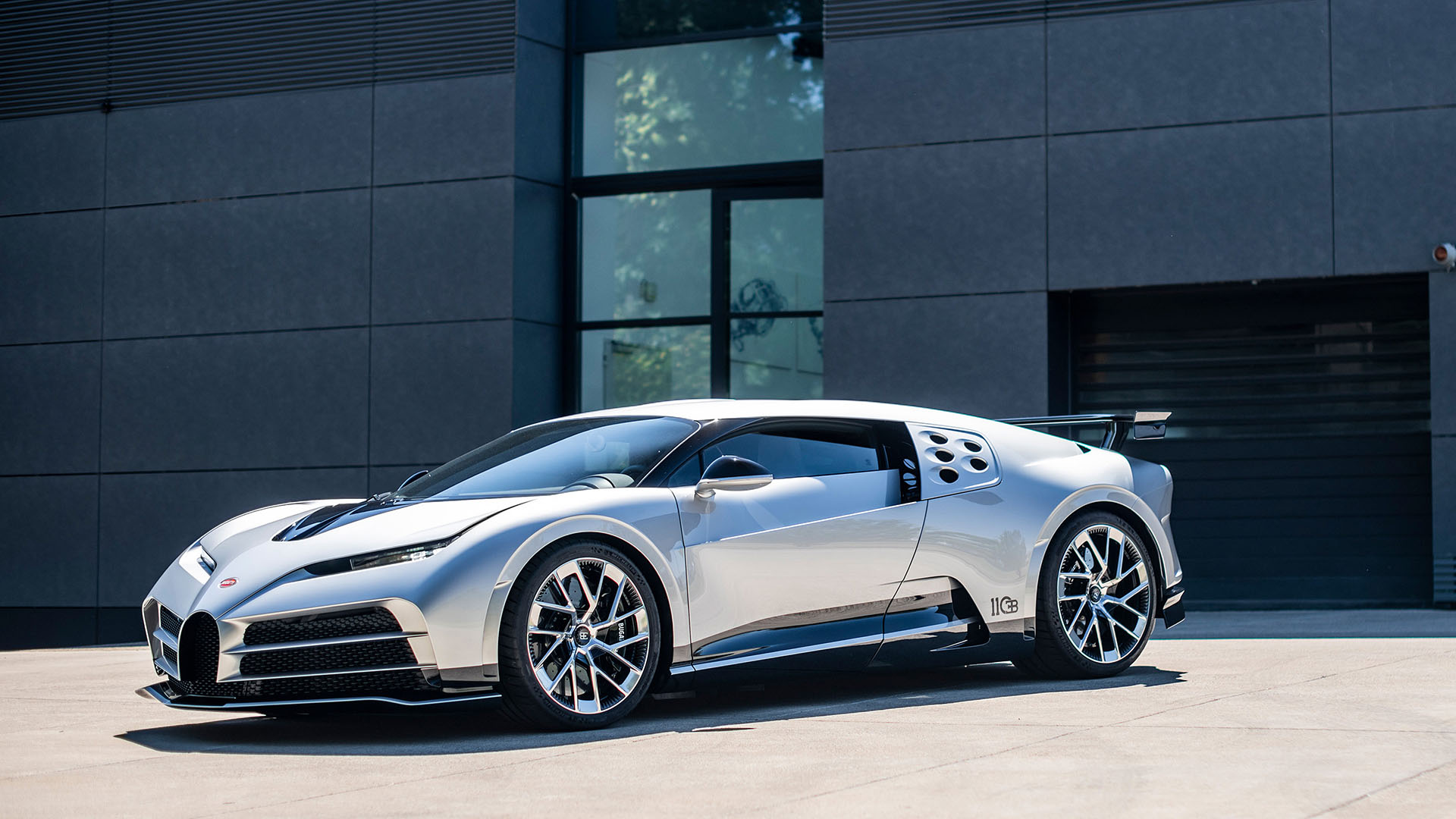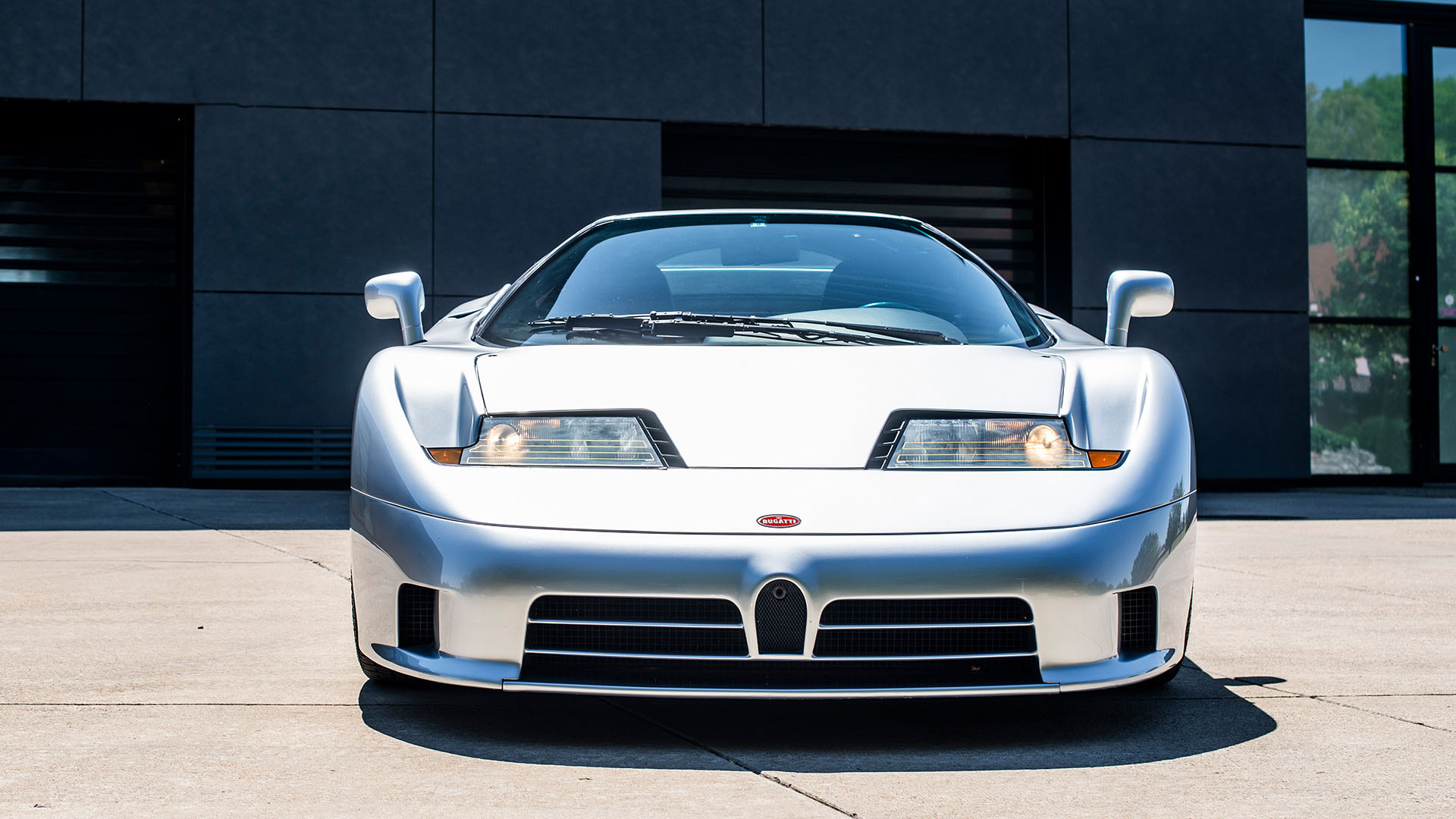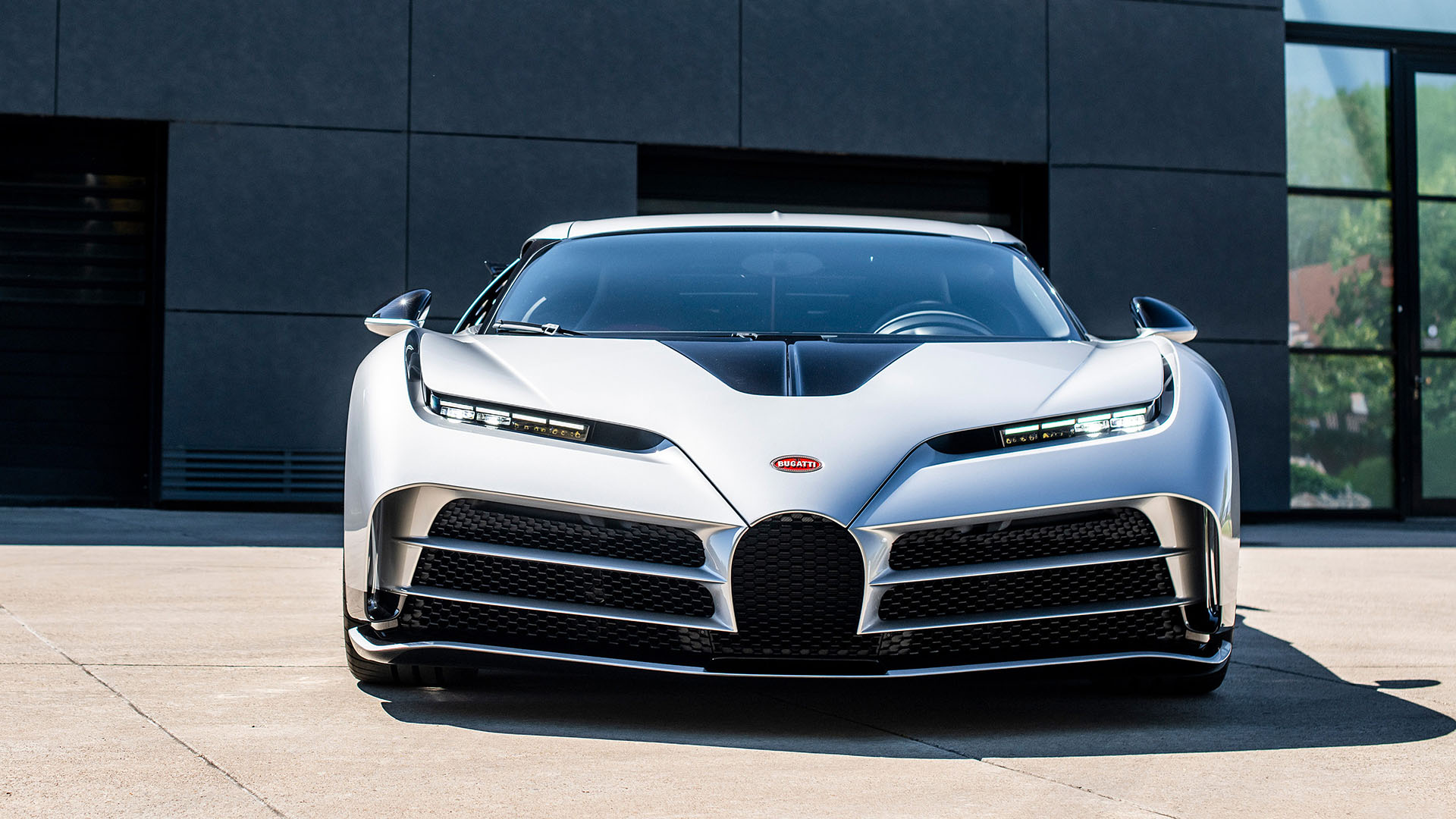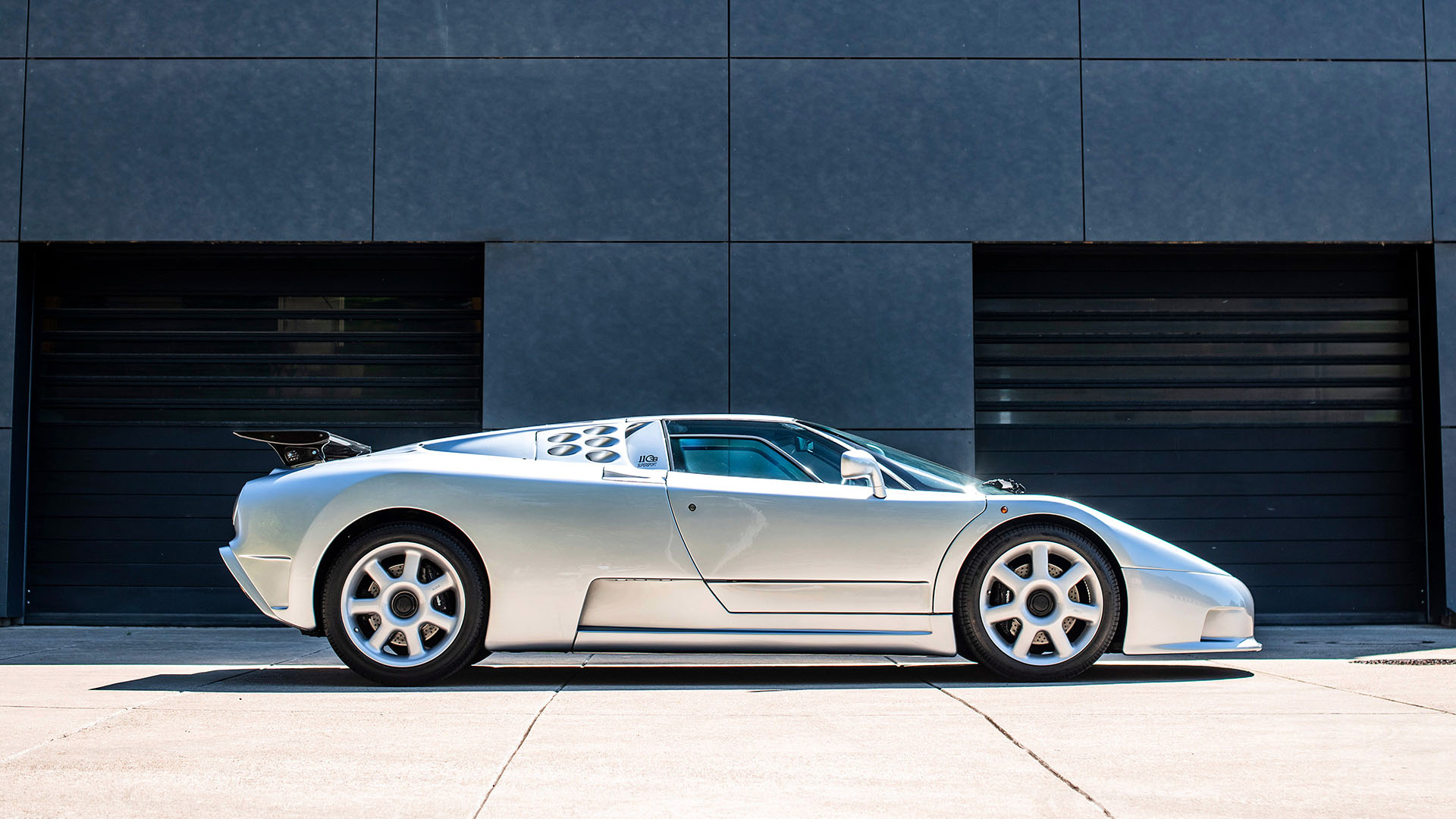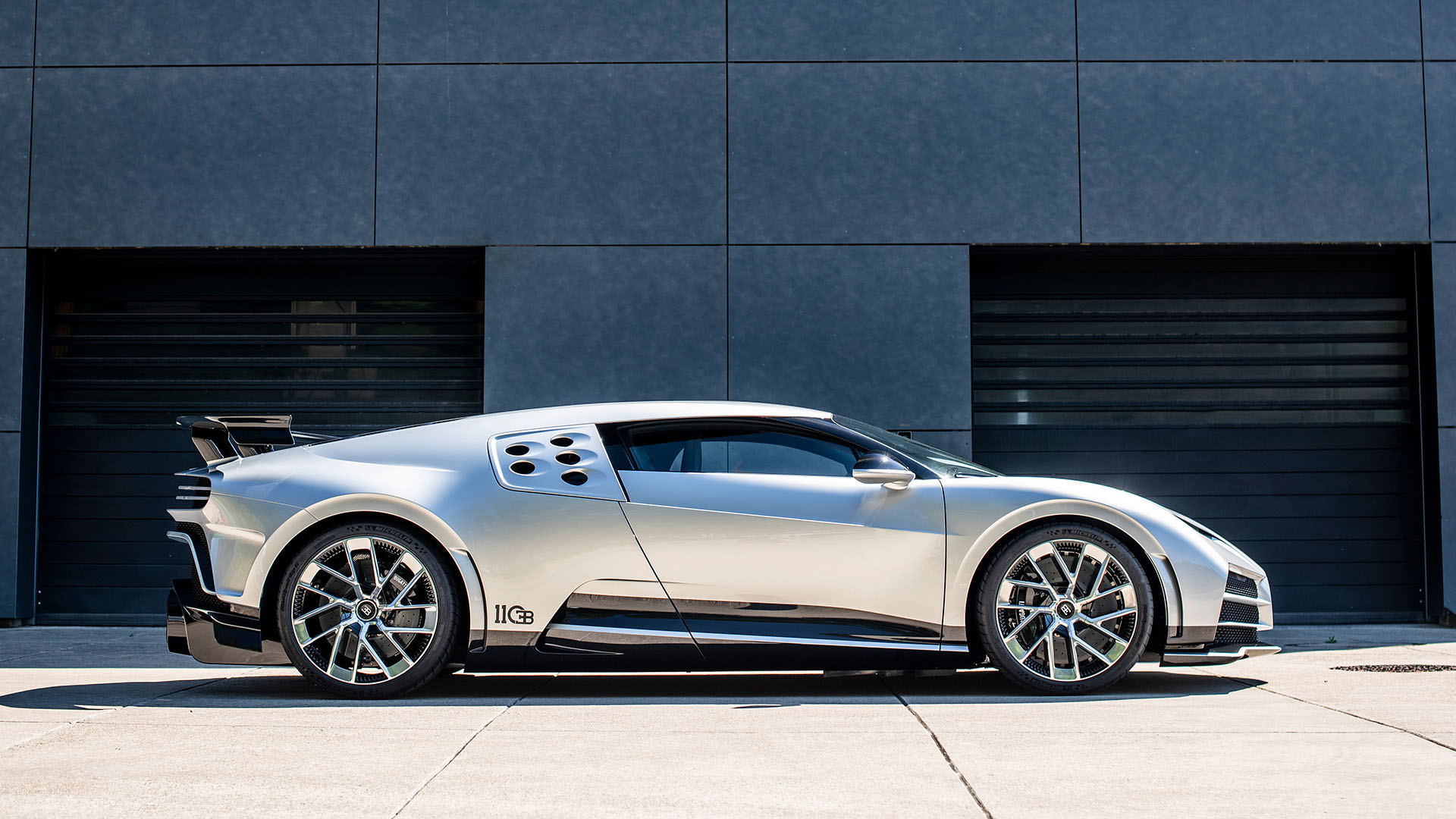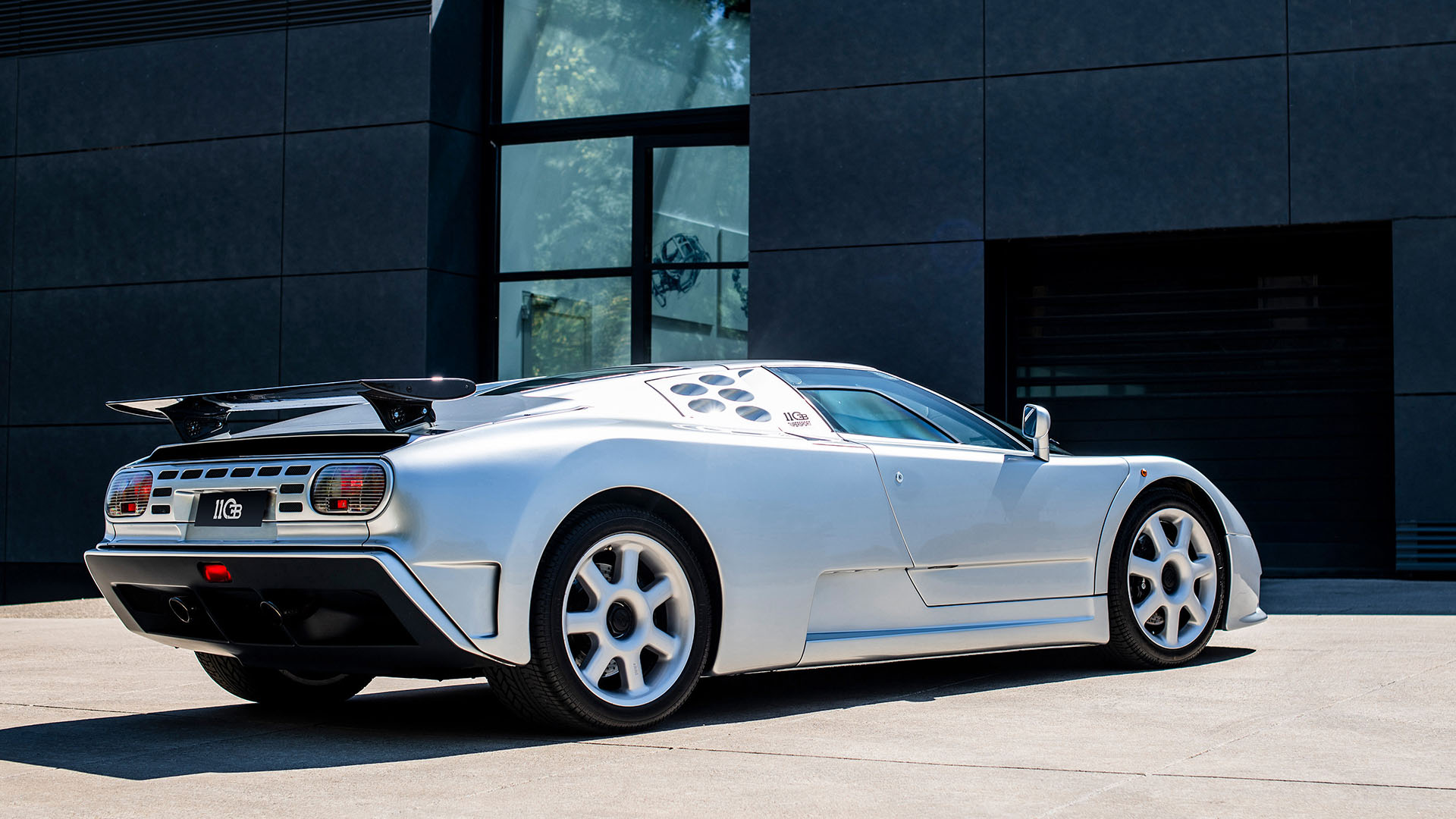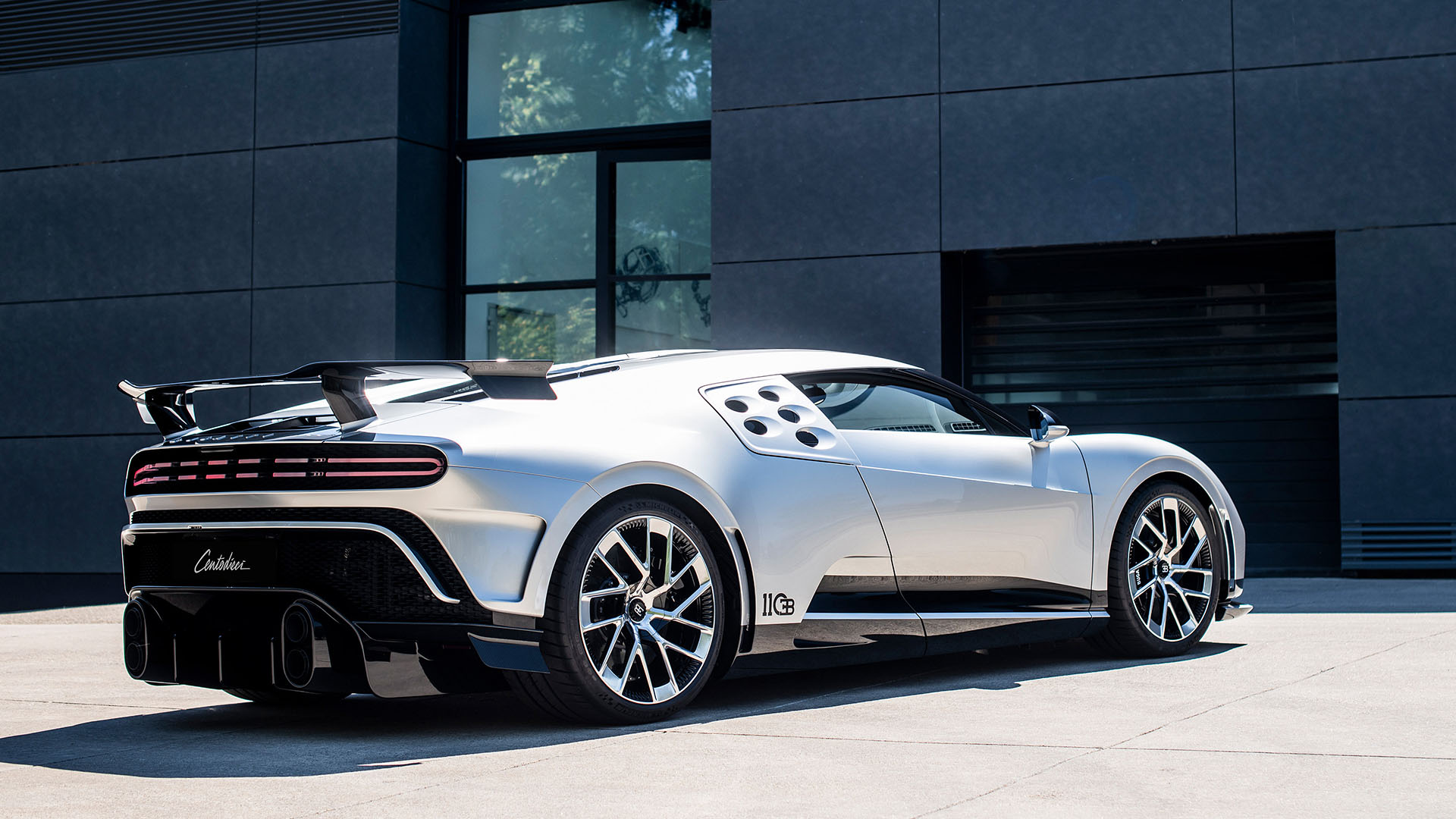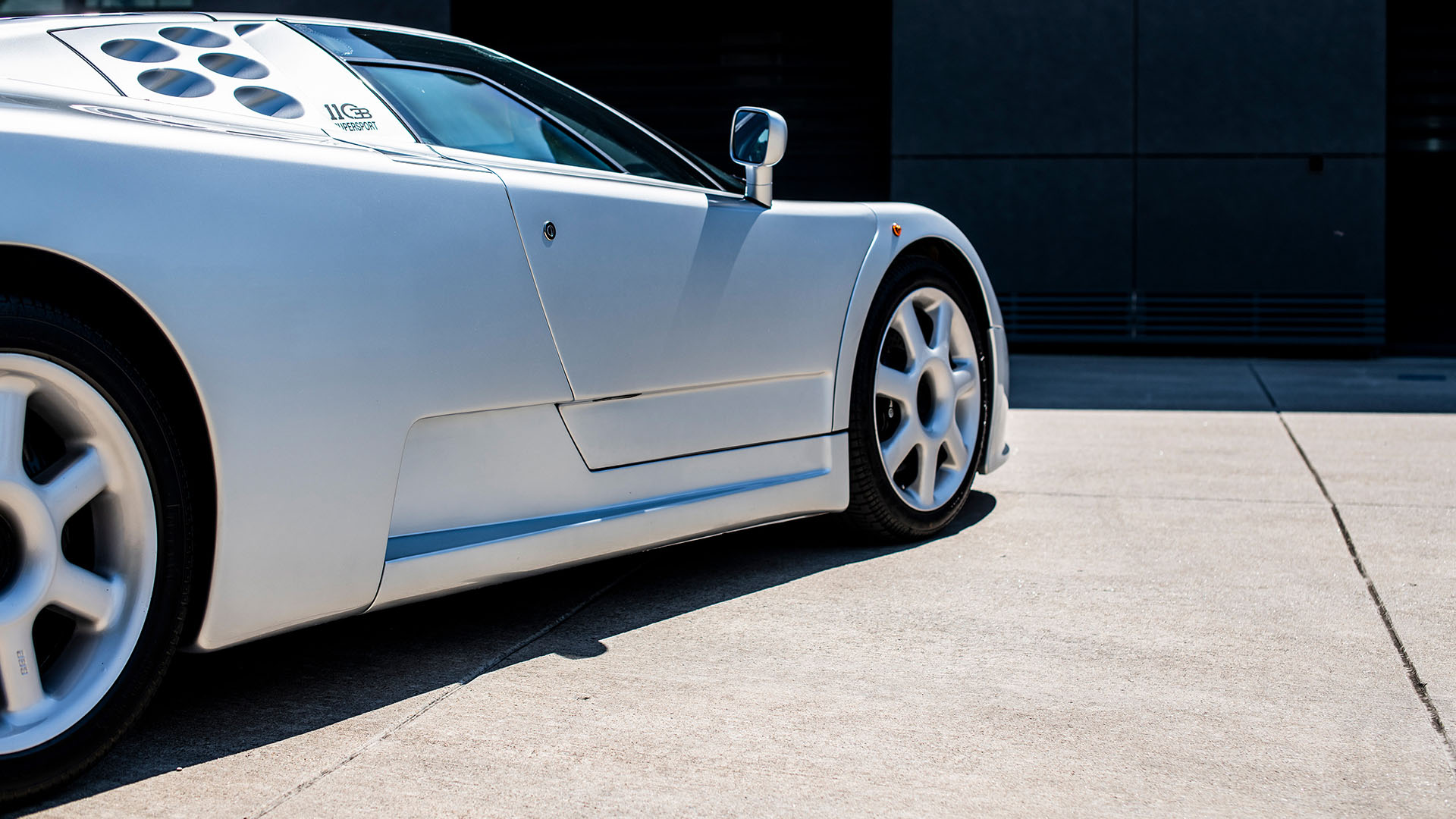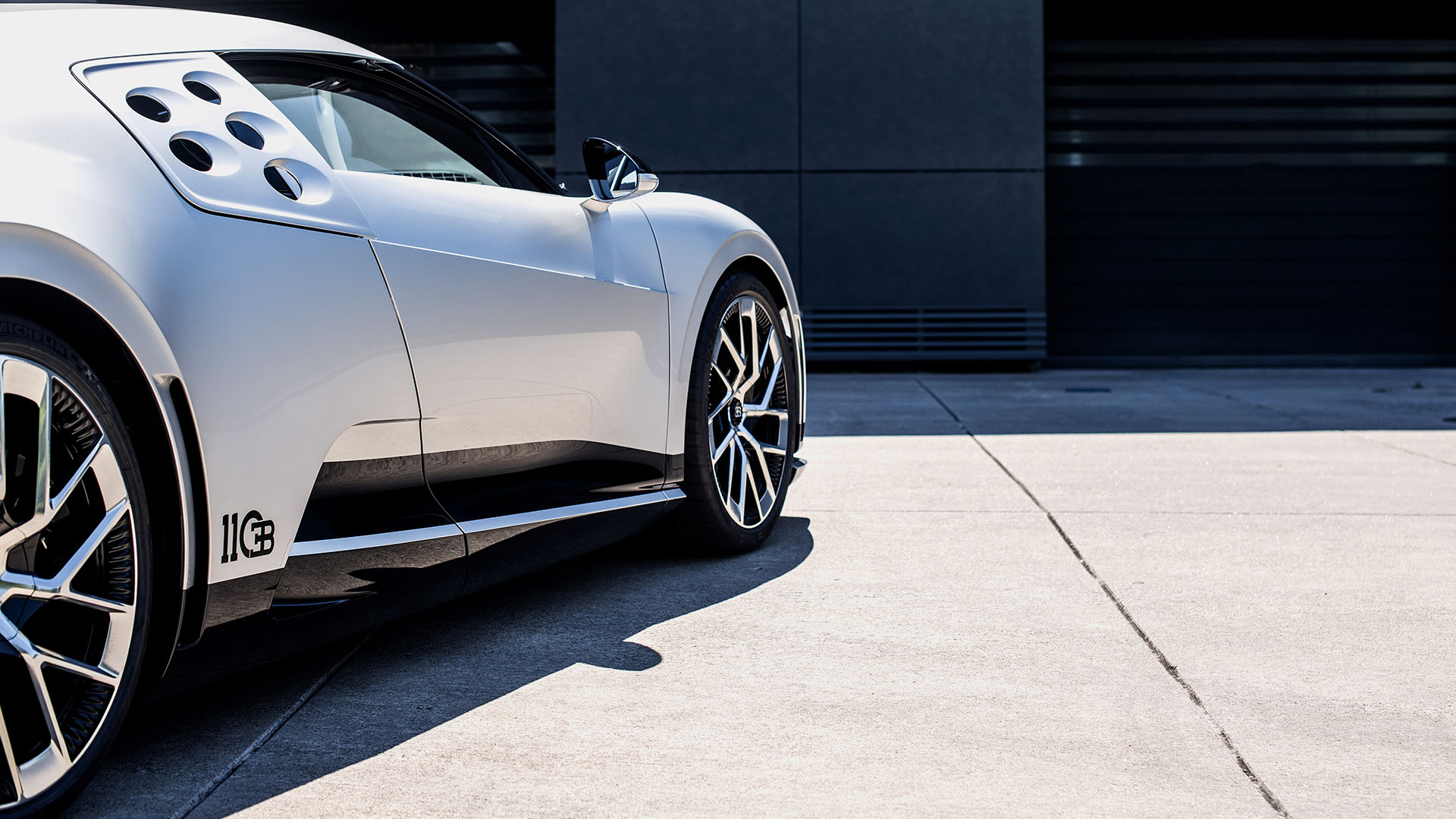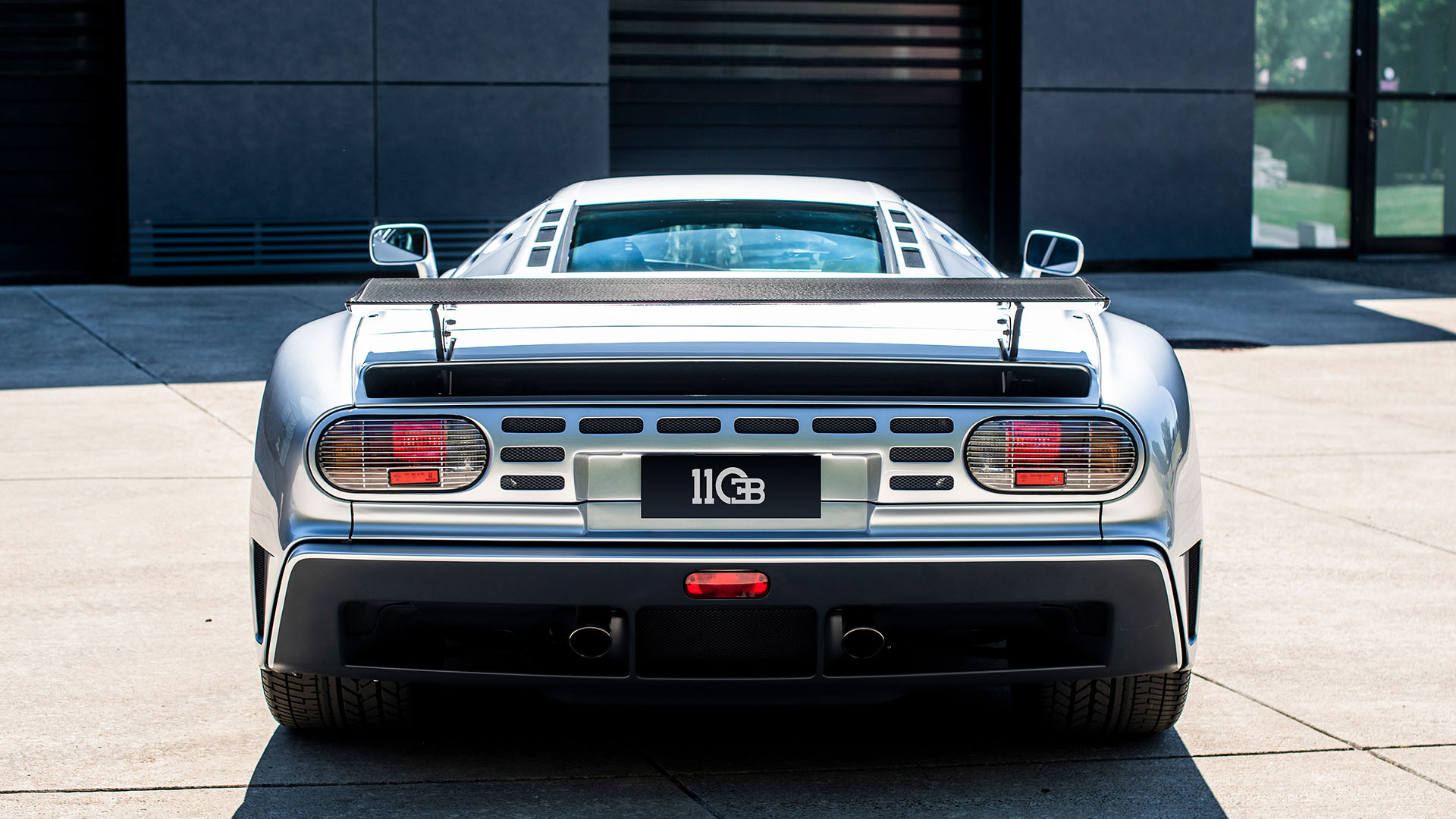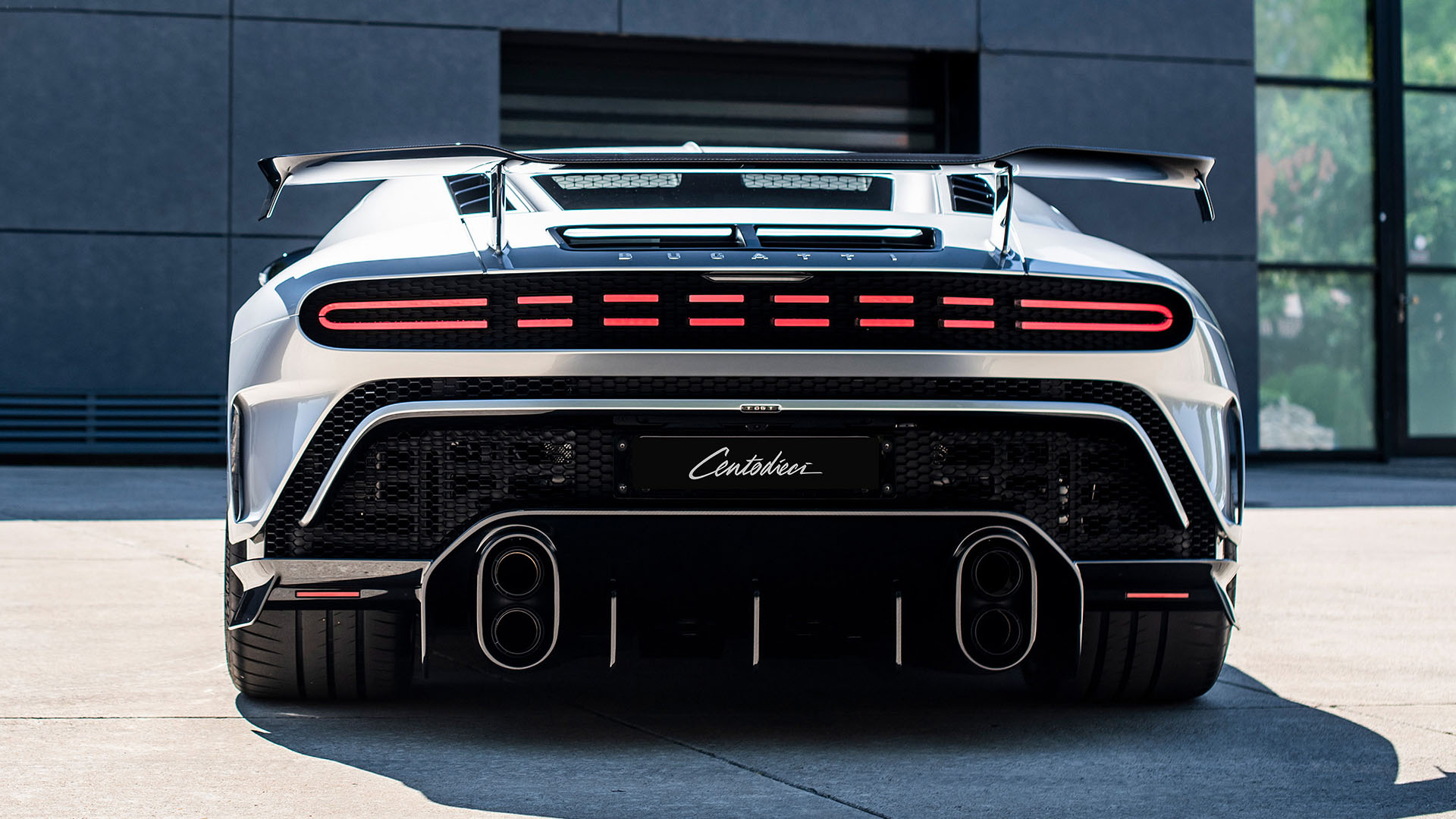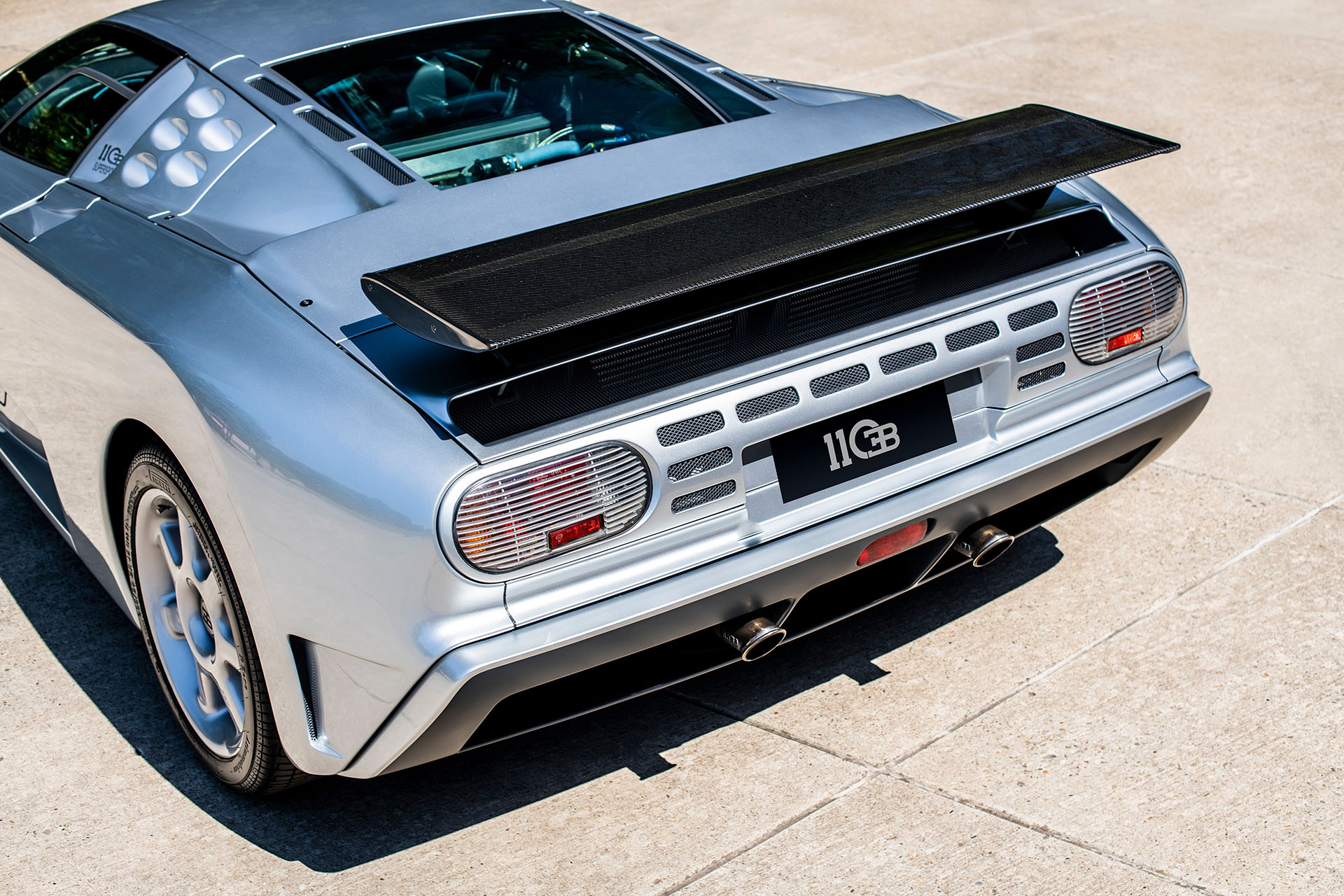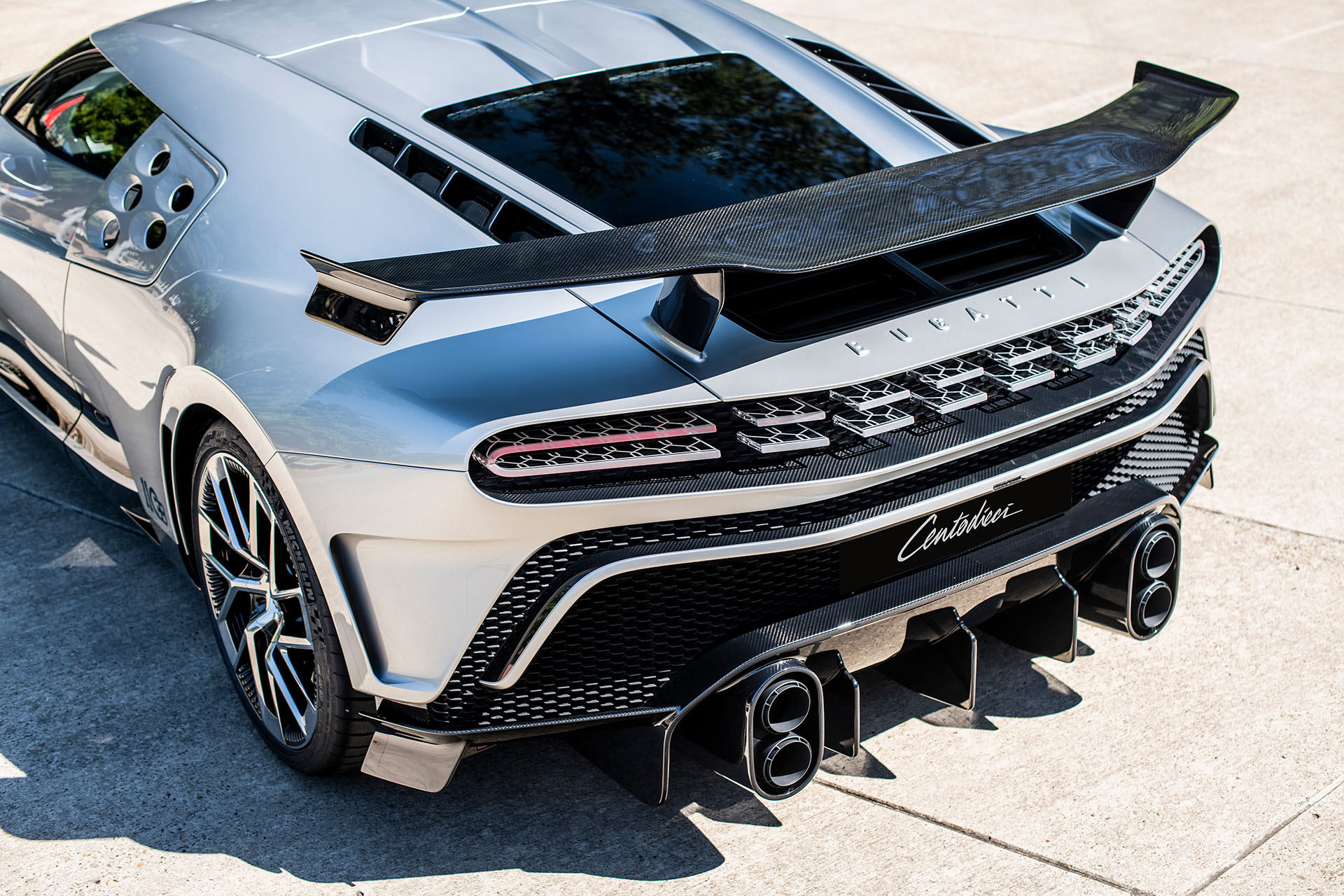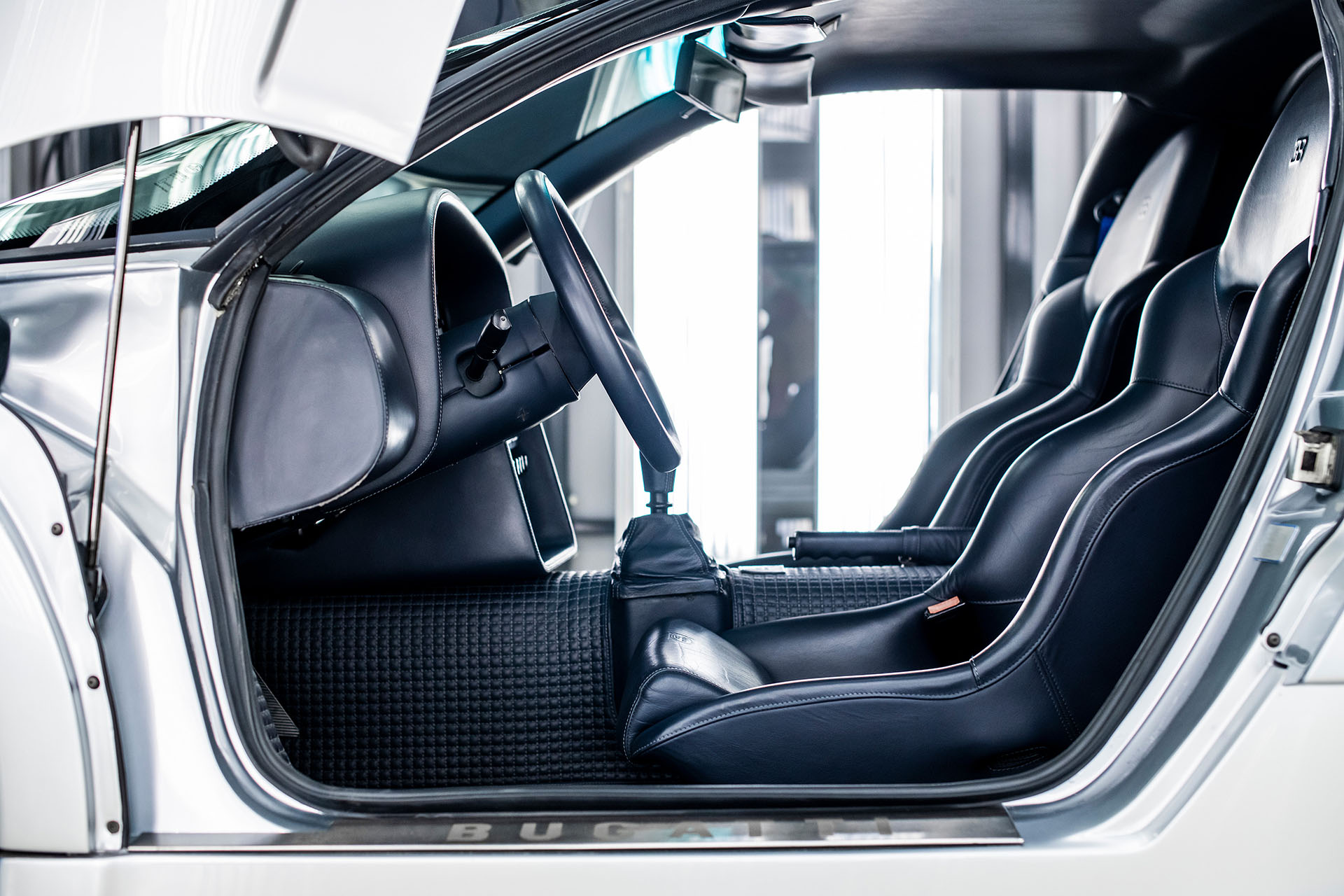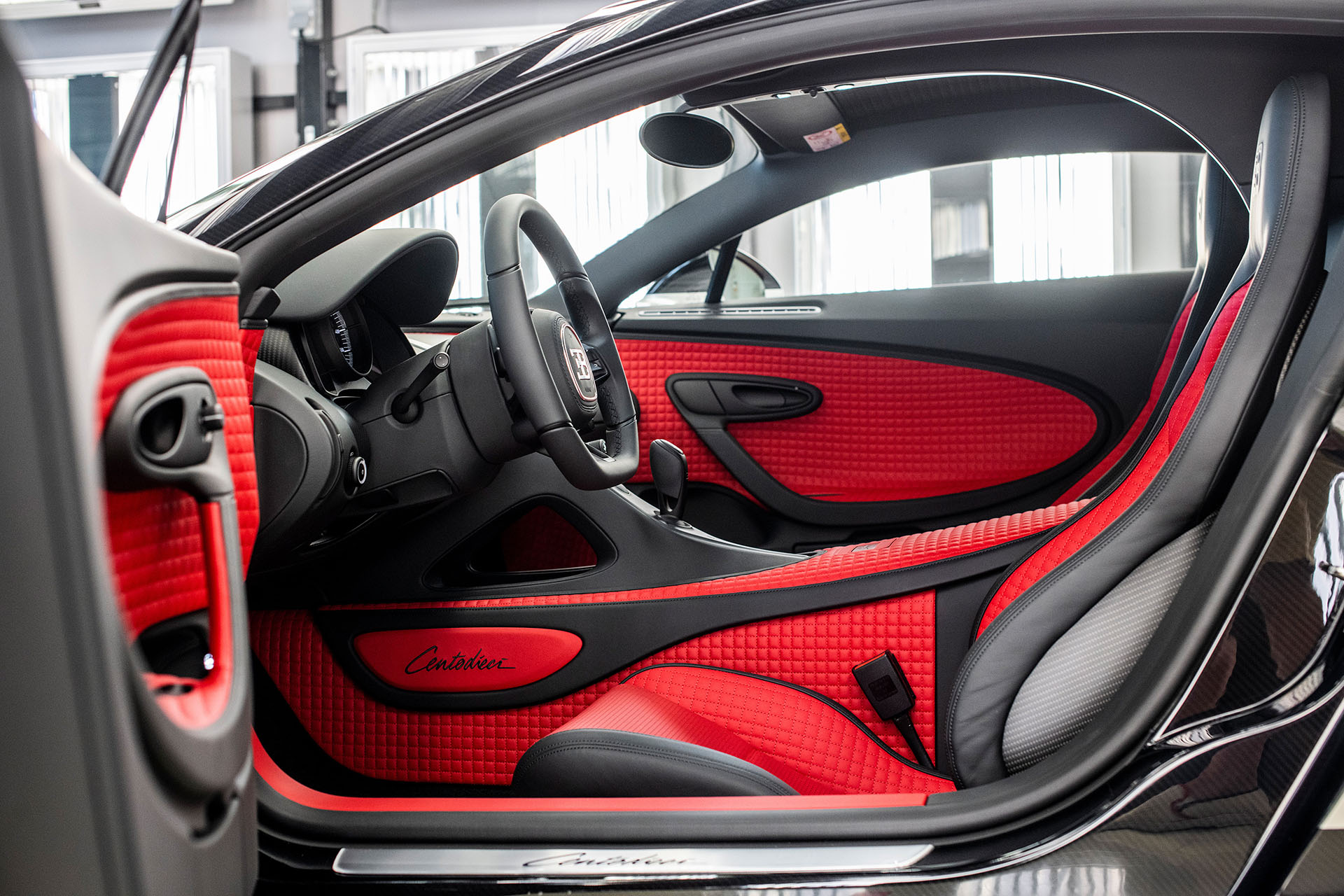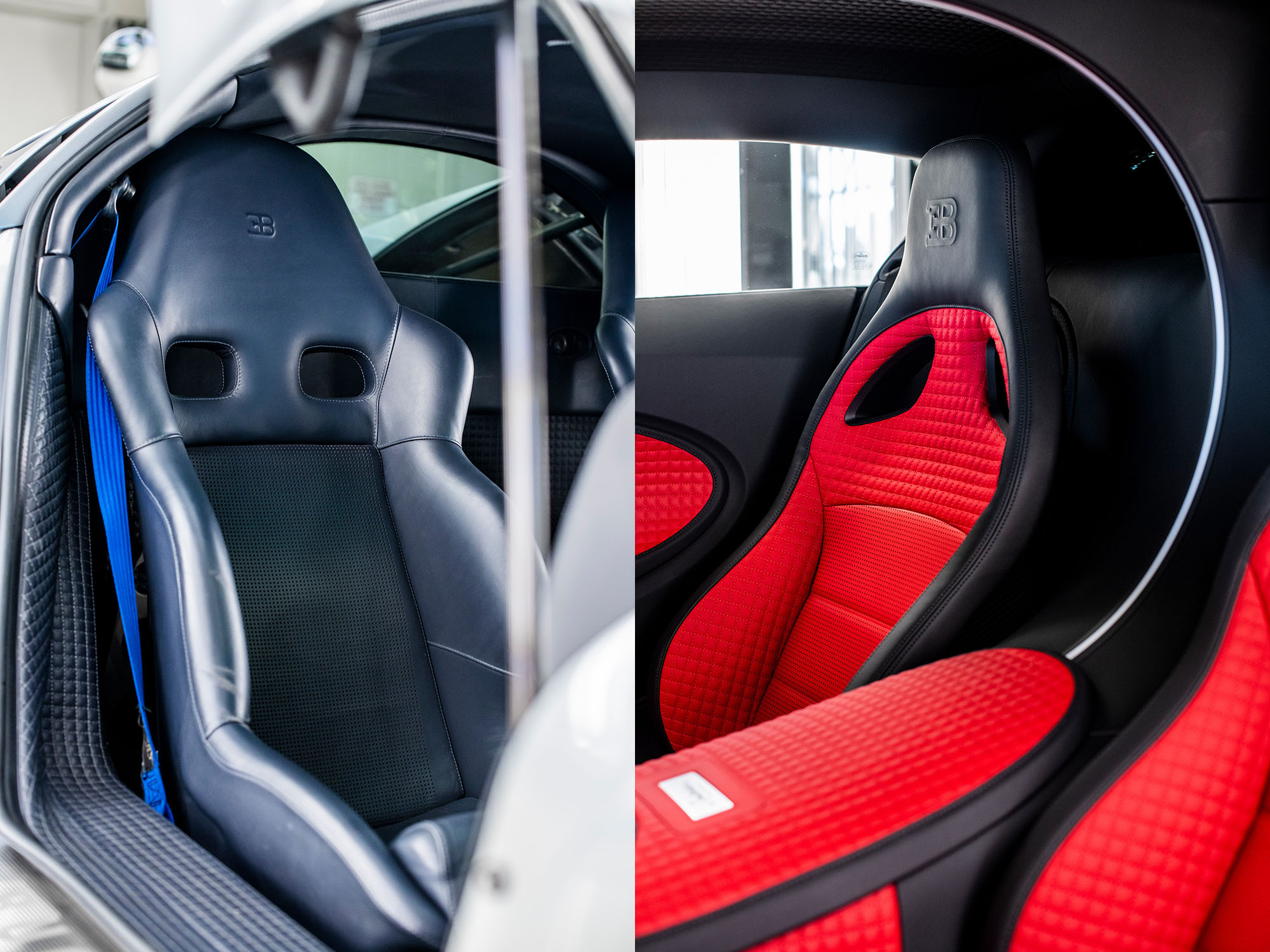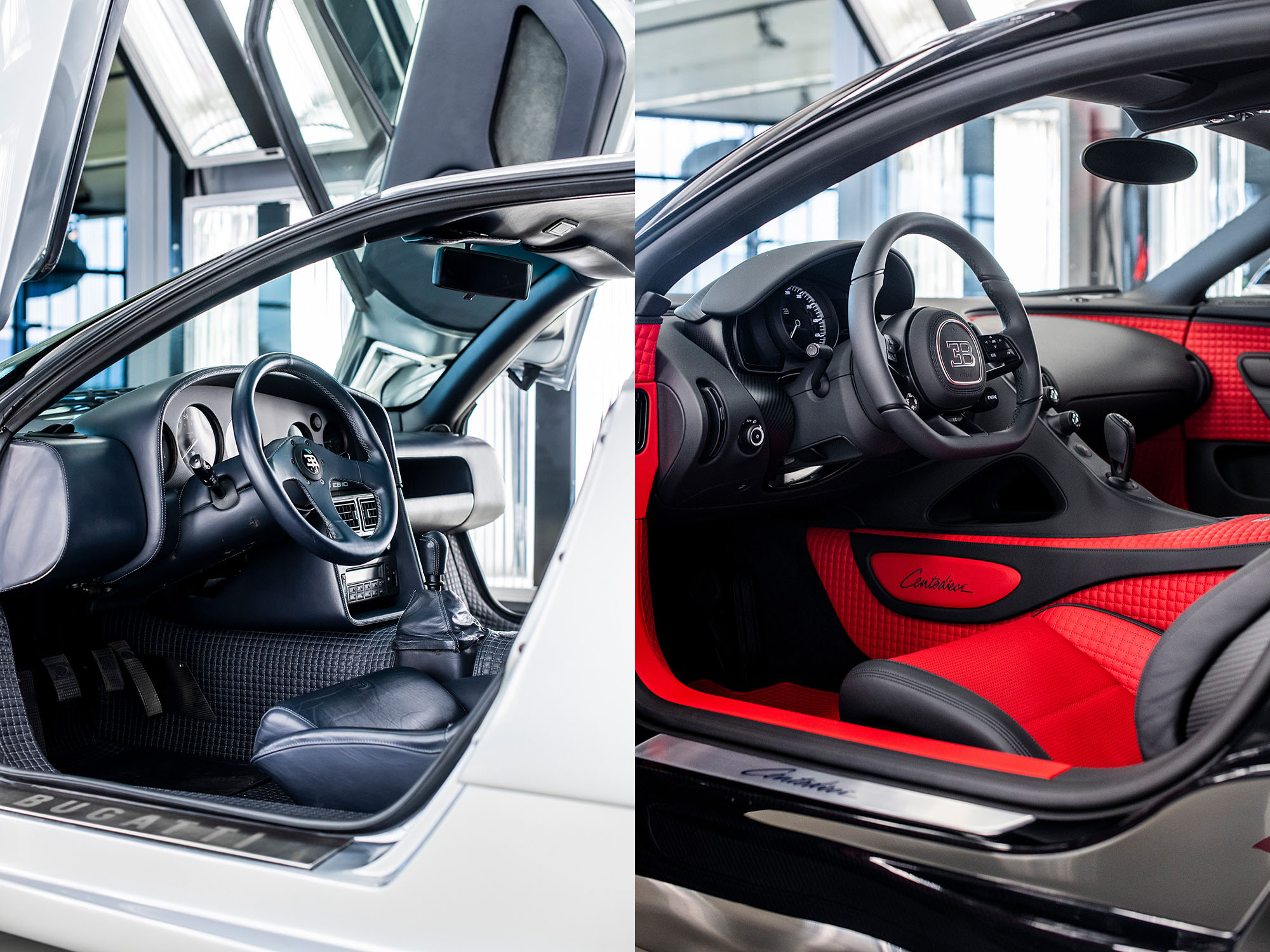Production of the Bugatti Chiron is reaching the end of the line, we’ll be seeing the successor any time soon now, and I’m almost certain some of Bugatti’s more ‘fortunate’ clients have already seen what’s coming next, the first new models since we’re talking about Rimac Bugatti, but if the rumors are anything to go by, the next-generation Bugatti will not be a re-bodied Rimac Nevera, an all-electric hypercar, it seems Mate Rimac is set to keep an internal combustion engine for the new Bugatti, probably with some aid from one or more electric motors, but ‘just’ a hybrid at most.
But with the final units of the Chiron being completed as you read this, there is another lady that has already reached her final production number, the limited edition Bugatti Centodiece, the very last one that is going to a customer has just been built in Molsheim, and the specification this client ordered makes it a perfect example to show the evolution from the original EB110 Supersport into this modern-day, coachbuilt rarity, it is very clear that the design team at Bugatti really took a long and hard look at the EB110 Supersport, the lighter, more powerful version of the legendary EB110 GT.
Achim Anscheidt, Bugatti Design Director, said: “The EB110 is unique in Bugatti history. With the brand’s rebirth in the late 1980s, the EB110 emerged with timeless sports car proportions. Its design was finished by Giampaolo Benedini, the architect responsible for the Bauhaus-inspired Campogalliano factory of the period, and the EB110’s memorable graphics and sophisticated shapes certainly reflect that architectural approach. But what was true of the EB110 Supersport is true for us today: form follows performance. So we wanted to look at why this car looked the way it did and reinterpreted that for a modern era Bugatti.”
The similarities are immediately obvious. The Supersport was fitted with five instantly recognizable cooling holes in the B-pillar, necessary to feed air to the 3.5-liter quad-turbocharged V12 engine. That air then washes through the glass-covered engine bay and exits via ten slots in the rear. In the Centodieci, these elements are reinterpreted and modernized, with air entering through five cooling ports in the apex of a newly shaped Bugatti C-line, over the W16 engine – which receives an EB110-inspired glass cover – and out through the rear, including in between a new light signature that mimics the vents on the EB110 Supersport. At the rear, an enlarged rear diffuser houses vertically stacked quad exhausts, in a modern homage to the EB110 Supersport’s twin pipes.
Each and every single detail must not only be beautiful in design but also able to deliver at levels of road-going performance that even the revolutionary EB110 Supersport could not match. The 1,600 PS Centodieci sprints from 0 to 100 km/h (62 mph) in 2.4 seconds, to 200 km/h (124 mph) in 6.1 seconds and to 300 km/h (186 mph) in 13.1 seconds; the top speed is electronically limited to 380 km/h (236 mph).
Nils Sajonz, Head of Special Projects in the Bugatti Design Team, said: “When designing a car that is able to reach safely the speeds the Centodieci is capable of, you have to take into account many different considerations. It must be safe, it must be aerodynamic and it has to direct air effectively around the powertrain components for cooling. We used the Chiron powertrain and monocoque as a base, but the development of the Centodieci was so wide-ranging that we were essentially designing an entirely new car. To achieve the desired levels of performance and stylistic perfection, this is the only way.”
Paying appropriate homage to the EB110 Supersport meant the design team had to focus on reimagining its iconic silhouette, which appears to leap forwards even while stationary. This meant creating an entirely new roofline and profile, with a front that sits much lower and a rear that sits much higher. The new visor-inspired glasshouse appears to sweep seamlessly around the body, while a new frontal visual identity is inspired by the EB110’s understated Bugatti horseshoe grille.
With the proportions set, the design team looked at modernizing elements of the EB110’s Bauhaus-inspired flat surfaces and details. The sides of the Centodieci create a play of light and shadow with only gentle curves, while the slab-shaped headlights of EB110 evolve into cutting-edge slimline LED headlights on the Centodieci – a bespoke development just for this project.
Achim Anscheidt continued: “Some have argued that without the EB110, the Bugatti brand would not be in the position it is today. The car helped to shape the new vision of the company following its acquisition by the Volkswagen Group in the late 1990s. We have engineering geniuses such as the recently departed Nicola Materazzi to thank for its incredible performance, but we also recognize the amazing vision of its designers. The timeless shape provided us with endless inspiration to create a fitting homage to this very significant piece of Bugatti history.”
Just ten examples of the highly exclusive Bugatti Centodieci will be hand-built in the Molsheim Atelier and delivered to customers until the end of the year, with each already sold at a unit price of eight million euros, so you won’t be able to buy a Bugatti Centodiece anymore, nor a Chiron for that matter, the production of the current Bugatti range has been sold out a long time ago, but we can still admire the final customer Bugatti Centodiece in the video below before the owner takes delivery of his one-of-ten beauty:
The following photo gallery will clearly show the brand new Bugatti Centodiece compared to the classic, legendary EB110 Supersport, different angles of both cars are shown below or next to each other so you can clearly see where the inspiration for the limited-edition Centodiece came from, sometimes you have to look at the past to create the future, and that’s is exactly what the design team at Bugatti fulfilled in this case:


